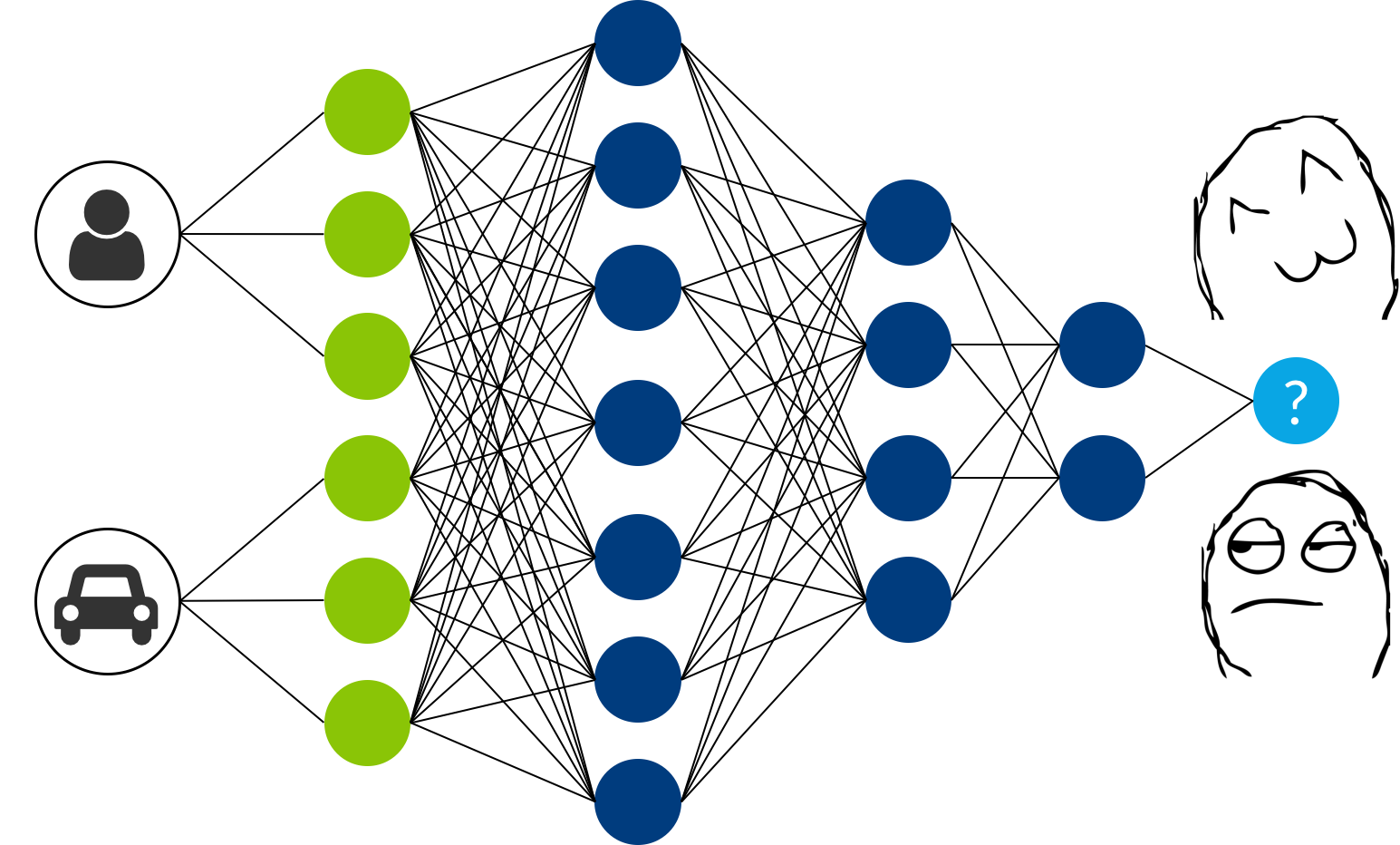Introduction
Recommendation systems are built to predict what users might like, especially when there are lots of choices available. They can explicitly offer those recommendations to users (e.g., Amazon or Netflix, the classic examples), or they might work behind the scenes to choose which content to surface without giving the user a choice.
Either way, the “why” is clear: they’re critical for certain types of businesses because they can expose a user to content they may not have otherwise found or keep a user engaged for longer than they otherwise would have been. While building a simple recommendation system can be quite straightforward, the real challenge is to actually build one that works and where the business sees real uplift and value from its output.
Recommendation systems can be built using a variety of techniques, from simple (e.g., based only on other rated items from the same user) to extremely complex. Complex recommendation systems leverage a variety of different data sources (one challenge is using unstructured data, especially images, as the input) and machine learning (including deep learning) techniques. Thus, they are well suited for the world of artificial intelligence and more specifically unsupervised learning; as users continue to consume content and provide more data, these systems can be built to provide better and better recommendations.
In this post and those to follow, I will be walking through the creation and training of recommendation systems, as I am currently working on this topic for Master Thesis. Part 1 provides a high-level overview of recommendation systems, how they are built, and how they can be used to improve businesses across industries.
The 2 Types of Recommendation System
There are two primary types of recommendation systems, each with different sub-types. Depending on goals, audience, the platform, and what you’re recommending, these different approaches can be employed individually, though generally, the best results come from using them in combination:
1 — Collaborative Filtering
It primarily makes recommendations based on inputs or actions from other people (rather than only the user for whom a recommendation is being made).
Variations on this type of recommendation system include:
By User Similarity: This strategy involves creating user groups by comparing users’ activities and providing recommendations that are popular among other members of the group. It is useful on sites with a strong but versatile audience to quickly provide recommendations for a user on which little information is available.
By Association: This is a specific type of the one mentioned above, otherwise known as “Users who looked at X also looked at Y.” Implementing this type of recommendation system is a matter of looking at purchasing sequences or purchasing groups, and showing similar content. This strategy is useful for capturing recommendations related to naturally complementary content as well as at a certain point in the life of the user.
2 — Content-Based
Content-based systems make recommendations based on the user’s purchase or consumption history and generally become more accurate the more actions (inputs) the user takes.
More specific types of content-based recommendation systems include:
By Content Similarity: As the most basic type of content-based recommendation system, this strategy involves recommending content that is close based on its metadata. This approach makes sense for catalogs with a lot of rich metadata and where traffic is low compared to the number of products in the catalog.
By Latent Factor Modeling: Going one step further than the content similarity approach, the crux of this strategy is inferring individuals’ inherent interests by assuming that previous choices are indicative of certain tastes or hobbies. Where the previous strategy is based on explicit, manually filled catalog metadata, this strategy hinges on discovering implicit relationships. This is done by using the history of users’ larger interactions (e.g., movie watched, item purchased, etc.) to learn these tastes.
By Topic Modeling: This is a variant of the Latent Factor Modeling strategy, whereby instead of considering users’ larger actions, one would infer interests by analyzing unstructured text to detect particular topics of interest. It is particularly interesting for use cases with rich but unstructured textual information (such as news articles).
By Popular Content Promotion: This involves highlighting product recommendations based on the product’s intrinsic features that may make it interesting to a wide audience: price, feature, popularity, etc. This strategy can also take into account the freshness or age of the content and thus enable using the most trendy content for recommendations. This is often used in cases where new content is the majority.
The 6 Steps to Build a Recommendation System
Building a successful and robust recommendation system can be relatively straightforward if you’re following the basic steps to grow from raw data to a prediction. That being said, there are some particularities to consider when it comes to recommendation systems that often go overlooked and that, for the most efficient process and best predictions, are worth introducing (or reiterating).
This section will walk through the six fundamental steps to completing a data project in the context of building a recommendation system.
1 — Understand the Business
Extremely simple and critical but often overlooked, the first step in building a recommendation system is defining the goals and parameters of the project. This will most definitely involve discussions between and input from both the data team as well as business teams (which might be product managers, operations teams, even partnership or advertising teams, depending on your product).
Here are some specific topics to consider to understand the business need more deeply and kickstart the discussion between these teams:
What is the end goal of the project? Is the idea to build a recommendation system to directly increase sales / achieve a higher average basket size / reduce browsing time and make a purchase happen faster / reduce the long tail of unconsumed content / improve user engagement time with your product?
Is a recommendation really necessary? This is perhaps an obvious question, but since they can be expensive to build and maintain, it’s worth asking. Can the business achieve its end goal by driving discovery via a static set of content instead (like staff/editor picks or most popular content)?
At what point will recommendations occur? If recommendations make sense in multiple places (i.e., on a home screen upon first visiting the app or site as well as after purchasing or consuming content), will the same system be used in both places, or are the parameters and needs distinct for each?
What data is available on which to base recommendations? At the time of recommendation, approximately what percentage of users are logged in (in which case there may be much more data available) vs. anonymous (which could complicate things for building the recommendation system)?
Are there product changes that must be made first? If the team wants to build the recommendation system using more robust data, are there product changes that must be made first to identify users earlier (i.e., invite them to log in sooner), and if so, are they reasonable changes from a business perspective?
Should all content or products be treated equally? That is, are there particular products or pieces of content that the business team wants to (or has to) promote aside from organic recommendations?
How can users with similar tastes be segmented? In other words, if employing the model based on user similarity, how will you decide what makes users similar?
2 — Get the Data
The best recommendation systems use terabyte(s) of data. So when it comes to rounding up data to use for your recommendation systems, in general, the more the better. This can be difficult if users are unknown when you’re trying to make a recommendation for them — i.e., they’re not logged in or, even more challenging, they’re brand new. If you have a business where most users are unknown, you may need to rely on external data sources or general data not explicitly tied to preferences, like demographics, browsing history, etc.
When it comes to user preferences, there are two kinds of feedback: explicit and implicit.
Explicit user feedback is anything that requires user effort, like leaving a review/rating or initiating a complaint or product return (often from customer relationship management, CRM, data).
By contrast, implicit user feedback is information that can be gathered about a user’s preferences without them actually specifying those preferences. For example, past purchase history, time spent looking at certain offers, products, or content, data from social networks, etc.
Good recommendation systems usually employ a combination of these types of feedback since there are advantages and disadvantages to each.
Explicit feedback can be very clear: a user has literally stated their preferences, likes, or dislikes. But by the same token, it’s inherently biased; a user doesn’t know what he doesn’t know (in other words, he might like something but has never tried it and therefore wouldn’t list it as a preference or interact with that type of item or content normally).
By contrast, implicit feedback is the opposite — it can reveal preferences that a user didn’t — or wouldn’t — otherwise, admit to in a profile (or perhaps their profile information is stale). On the other hand, implicit feedback can be more complicated to interpret; just because a user spent time on a given item doesn’t mean that (s)he likes it, so it’s best to rely on a combination of implicit signals to determine preference.
3 — Explore, Clean, and Augment the Data
One thing to consider when exploring and cleaning your data for a recommendation system, in particular, is changing user tastes. Depending on what you’re recommending, the older reviews, actions, etc., may not be the most relevant on which to base a recommendation. Consider only looking at features that are more likely to represent the user’s current tastes and removing older data that might no longer be relevant or adding a weight factor to give more importance to recent actions compared to older ones.
Datasets for recommendation systems can be challenging to work with because they are commonly high dimensional, but at the same time, it’s also common that many of the features don’t have any values, which can make clustering and outlier detection difficult.
4 — Predict the Ranking
Given the work done in the previous steps, you could have already built a recommendation system, simply by ranking those scores by users and you’ll have products to recommend. This strategy doesn’t use machine learning or a predictive element, but that’s totally fine. For some use cases, this is sufficient.
But if you do want to build something more complex, there are lots of subtasks that can be done after users consume recommended content that can be used to further refine the system. There are several ways to leverage the hybrid approach to try for the highest-quality recommendations:
Presenting recommendations from different types of systems together side-by-side.
Maintaining multiple algorithms in parallel where the decision of which algorithm is preferred over another is itself subject to machine learning (e.g., multi-armed bandit).
Using a pure machine learning approach to combine multiple recommendation systems (logistic regression or other weighted regression methods). One specific example would be using a weighted average of two (or more) recommendations using different techniques.
It’s also possible that different models will work better in different parts of the product or website. For example, the homepage where the user has yet to take action vs. after the user has clicked or consumed content in some way.
5 — Visualize the Data
In the context of recommendation systems, visualization serves 2 primary purposes:
When still in the exploration phases, visualizations can help reveal things about the data set or give feedback on model performance that would otherwise be difficult to see.
After putting the recommendation system in place, visualizations can help convey useful information to the business or product teams (e.g., which content does well but isn’t being discovered, similarities between users’ tastes, content or products commonly consumed together, etc.) so they can make changes or decisions based on this information.
The primary issue with visualizing this type of data is the amount of data present, which can make it difficult to cut through the noise in a meaningful way. But by the same token, a good visualization will help make sense out of lots of data from which it would be otherwise difficult to derive meaningful insights.
6 — Iterate and Deploy Models
Recommendation systems that are working in a development environment or sandbox don’t do any good. It’s all about putting the system into production so that you can begin to see the effect on the business goals you’ve laid out in the beginning.
Additionally, keep in mind that the more data you have with which to feed the recommendation system, the better it can become. So with this type of data project perhaps more so than others, it’s critical to evaluate performance and continue to fine-tune, like adding new data sources to see if they have a positive effect.
In fact, making sure your recommendation system is built to adapt and evolve by regularly monitoring its performance is one of the most important parts of the process — a recommendation system that isn’t properly adjusting to tastes or new data over time likely will not help you ultimately achieve your initial project goal, even if the system performed well at first. Building a feedback loop to understand whether or not users care about recommendations will be helpful and provide a good metric for making refinements and decisions going forward.
If recommendations are core to your business, constantly trying new things and evolving the initial model you’ve created will be an ongoing task; recommendation systems are not something you can create and cast aside.
Challenges
It’s important to create a recommendation system that will scale with the amount of data you have. If it’s built for a limited dataset and that dataset grows, computation costs grow exponentially, and the system will be unable to handle the amount of data. To avoid having to rebuild your recommendation system later on, you must ensure from the beginning it is built to scale to expected data volumes.
It’s also possible that after spending time, energy, and resources on building a recommendation system (and even after having enough data and good initial results) that the recommendation system only makes very obvious recommendations. The crux of avoiding this pitfall really harkens back to the first of the seven steps: understand the business need. If there isn’t enough of a content long-tail or no need for the system, perhaps you need to reconsider the need to build a recommendation system in the first place.
Finally, people’s tastes don’t stay static over time, and if a recommendation system isn’t built to consider this fact, it may never be as accurate as it could be. Similarly, there is a risk of building a recommendation system that doesn’t get better over time. As users continue to consume content and more data is available, your recommendation system should learn more about users and adapt to their tastes. A recommendation system not agile enough to continue to adapt can quickly become obsolete and won’t serve its purpose.
Future Work
Basic recommendation systems have been around for quite some time, though they continue to get more complex and have been perfected by retail and content giants. But what’s next? What are the latest trends and developments that businesses should consider if they are looking to develop a truly cutting-edge system?
Context-aware recommendation systems represent an emerging area of experimentation and research, aiming to provide even more precise content given the context of the user in a particular moment in time. For example, is the user at home, or on the go? Using a larger or smaller screen? Is it morning or night? Given the data available on a certain user, context-aware systems may be able to provide recommendations a user is more likely to take in those scenarios.
Deep learning is already in use by some of the biggest and most powerful recommendation systems in the world (like YouTube and Spotify). But as the amount of data continues to skyrocket and more businesses find themselves up against a huge corpus of content and struggling to scale, deep learning will become the de facto methodology for not only recommendation systems but all learning problems.
Solving the cold-start problem is also something that cutting-edge researchers are starting to look at so that recommendations can be made for items on which there is little data. This is a critically important area for businesses with lots of turnover in content to examine so that they can successfully push items that will sell well (even before they know how that item will perform).
Conclusion
Recommendation systems can be an effective way to expose users to content they may not have otherwise found, which in turn can forward larger business goals like increasing sales, advertising revenues, or user engagement. But there are a few key points to find success with recommendation systems. Namely, recommendation systems should be, above all, necessary.
Building a complex system that requires experienced staff and ongoing maintenance when a simpler solution will do is a waste of data team resources that could be spent elsewhere for more impact. The challenge lies in building a system that will actually have a business impact; building the system in and of itself shouldn’t be the end goal.
Recommendation systems should also be agile. That is, adaptable and able to evolve as users do. Putting a recommendation system into production isn’t the final step in the process; rather, it’s an ongoing evolution, looking at what works, what doesn’t, thinking about additional data sources that might help make better recommendations, etc.
Now continue on to Recommendation System Series Part 2!











